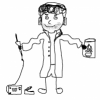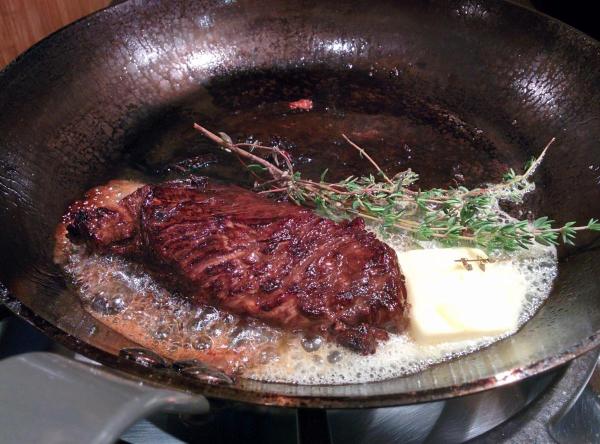-
Posts
116 -
Joined
-
Last visited
Content Type
Profiles
Forums
Events
Everything posted by PretentiousFood
-
I'm not sure if it's suitable in this build, but the 2SA1163 is basically a current production 2SA970 in a surface mount package. You might be able to use it with an adapter like this. Its complement is the 2SC2713.
-
I got one a few months ago. It's fantastic for tracing curves, and the spice modeling works quite well if you want to try playing with weird tubes. It does a great job with pentodes and tetrodes, too. One point of caution: the uTracer 3 is limited to 300V, and the 3+ to 400V. I haven't tried tracing an EL34 yet, but it might require an external filament supply. I haven't managed to trace anything at an instantaneous current greater than 200mA without tripping the circuit protection either, but that's probably user error. It will probably happen with an EL34 at higher grid bias voltages. If you're using it strictly for stax amps, you might be better off with something else. gm will vary according to your bias, and the EL34 at BH bias is right at the edge of the tracer's capabilities. The quick test options aren't especially reliable, and the software is still a bit buggy, too. It's an extremely powerful platform, but not especially straightforward. That said, I've been using it a lot for pentodes and it's been outstanding. For starters, I found out that most of mine suck, and that the ones I tested are startlingly out of spec. One last thing- I would advise building it with some extra protection on the HV supplies. I accidentally reverse biased the screen supply when testing an inverted triode, and still need to repair it.
-
Try Cinemag, perhaps? The CM-13107 is a 10k:600/300/150/32, and the mixed stack was very affordable. The primary impedance is a bit high, but they might another standard design that would be a better match. I know they mix their stack differently than Jack does, so it might make sense to derate the power handling slightly.
-

and now for something definitely different part 4
PretentiousFood replied to kevin gilmore's topic in Do It Yourself
Neat! The KSC3503 and KSA1381 might work better- they're current production complementary parts and good up to 300V, and the NPN has a much higher Hfe. Lots of good 200V parts too. -
Surprisingly, many current motherboards have RS232 support built in to the motherboard. If you're using a desktop, check the manual and you might just need to buy header off of eBay.
-
Wishing you much 300b, horsies, first class upgrades and fried chicken!
-

absolute cheapest vinyl rig possible...
PretentiousFood replied to recstar24's topic in Miscellaneous
Slightly off-topic, but I've been eyeing the U-Turn real hard over the last few weeks as my first rig. Do any of the other cheaper TTs offer balanced outputs from the cartridge? I wanted to build a preamp first. and it seems like a proper balanced/differential amp would be great for noise rejection. It feels kind of silly to use a transformer for phase splitting (and not step-up) when the cartridge doesn't need to be ground-referenced. -
JimL, you're absolutely right- thanks for the comments. The measurements were taken with bias applied to the grid, and a resistor (Rs) between source and ground. The output impedance really isn't that of the CCS. I redid the measurements with the device connected as a current source (which I think is the same thing as you were describing, nikongod?) and indeed measured very close to 300K for 28mA or so. Much better. Ignore Vg, the CCS was connected as a two-terminal circuit. This was tested with a 100R gate stoper. I repeated the measurement with a 1k gate stopper, and the impedance predictably dropped by a factor of 10. I'd be curious to see if we can't do some sort of hybrid ring-of-two CCS that benefits from the high impedance of DMOS and the extra feedback.
-
I just "traced" a DN2540 with a tube tracer with various degeneration resistor values. I'm not sure how valid the method is, but when you have a hammer everything looks like a nail. It looks like the published curves are very optimistic (or perhaps compressed by scale) in the region of interest for plate load design. The output impedance is the dVd/dId curve. All measurements taken from a single device (no averaging) with a 100R gate stopper. The TO92 sample measured differently, but It might just be sample variation. The output impedance is much closer to constant as a function of bias when some degeneration is applied. For these curves, Vgs is actually Vgs + I*Rs. It looks like a BJT current source might beat the single DN2540 for high currents, where you won't have much degeneration. Link here for all the measurements. I'll try measuring a cascode and some other devices, if the methodology is sound.
-
-

and now for something completely different part 3
PretentiousFood replied to kevin gilmore's topic in Do It Yourself
Rohm's got some new stuff that's not quite as good as the BC550/560 pairs with regards to ft, but the Hfe/Ic curves look a fair bit more linear and better matched between the P and N parts, going by the datasheets. 2SA1576 / 2SC4081 2SA1774 / 2SC4617 -
-
Thanks for your comments! I've tried the 4P1L in a single ended amp with constant current heating, and haven't had much luck keeping it quiet. Something in there is rattling, but I'm not sure if it's the heater or the grids. I've tried starving the filament as well and hadn't noticed much of a difference. Might just be a bad batch. The idea was to use an inverted triode for the input stage. This divides the already small input signal by mu, but makes it easy to DC couple the amp from input to output while only using tubes for amplification, and provides an extremely high impedace, low capacitance input without the use of feedback. I'm not convinced that it's worth the tradeoff, but there's an easy way to find out. Since the triode is inverted, dissipation will be shifted from the plate to the grid, and the curves defintely won't match the datasheet. I wouldn't bother sticking a 10Y here, but I'll look into the 6P21S. Picked up a 12B4A for now, and I'll be tracing the inverted curves as soon as the tracer is in. Failing that, I guess a couple of transformers and mosfets can't sound THAT bad.
-
Shoot, was hoping this could be an excuse to try out thoriated tungsten. Thanks for the heads up. Are regulator tubes also generally more prone to microphonics? The 12B4A looks like a great bet (and silly cheap), thanks! EF184 or something similar will very likely be making an appearance elsewhere in there.
-
Any tips for a low mu, low power triode or triode-strapped thing? Linearity isn't a big deal for once, and DHTs are cool too. Right now I'm looking at either the 26 (mu of 8, but pretty filament), 6080, or 7233. It's for a phono so they need to be quiet.
-
My, what big cores you've got!
-
Why bother with Mundorfs when you could be the proud owner of 11lb of teflon? When I simmed it, the LND150 showed marginally better linearity at high frequency, and a few 10s of dB better supply rejection-- probably nothing audible. They'd need to be selected though, since they only guarantee an Idss of 1mA. I'll see if I can't measure the two cascodes.
-
Very cool. I build something similar with an EL34 output stage, and no tail CCS on the output, based on Spritzer's ES-1 rebuild thread. The DN2540 wasn't super happy in the input LTP. If the second 12AT7 is to be biased at ~1/2 B+ (170V) with a 300K load, each triode is running at just over 500uA. A LND150 would be perfect there (and is pin-compatible with the DN2540 in TO92). Looks like you plan on running it hotter though.
-
That's some pretty fantastic casework. That recessed knob
-
I've tried but I think I have tin ears. There really isn't a good way to quickly swap out a high voltage supply without building some complicated rig, and the amps where I've tried it already had high supply rejection. I've always justified it to myself based on longevity and an aversion to series connected caps, for a relatively small increase in price now that everyone's releasing big DC link caps. E: I think Frank Cooter has a few posts about switching to film caps for B+ to good effect in his single-feed designs.
-
I haven't tried the Wima, but I've had good luck with the new Panasonic EZP in power supplies. A bit bigger but cheaper, also stacked PP. The Vishay DC-Link stuff is a good bet too.
-
Any reason to stock up if you're not building a Dynalo? Looks like the BC550/560 pair could be a drop in replacement unless you need the extra dissipation.
-
PCBShopper is pretty good for finding the cheapest boards, but most places won't populate them as well. I use DirtyPCBs (based in Shenzhen) and haven't had to pay any customs fees on DHL shipping to Canada.
-
Shoot, hadn't noticed they were 250k. They're a bit bigger than I can comfortably cram into the chassis anyway. The TKD stepped attenuators would work, but each one costs more than my friend paid for the amp. The potentiomters aren't long enough unless he has a special production.
-
Looks like the Black Beauty might fit! Thanks for the tip, I hadn't heard of them before.




